| [1] 闫学朋,毛古燧,付俊,等.超声检查在类风湿关节炎诊疗中的研究进展[J].风湿病与关节炎,2016,5(10):67-69.[2] 耿研,邓雪蓉,张卓莉. 超声技术——类风湿关节炎治疗随访中的重要手段[J]. 中华风湿病学杂志, 2014, 18(1):53-55.[3] 蒋芳艳,苏海庆,周琛,等.原发性干燥综合征关节炎肌骨超声半定量评分与疾病活动指数的相关性分析[J].广西医科大学学报, 2018,35(4):491-493.[4] 朱丽容,唐毅,肖欢,等. 肌肉骨骼超声评价幼年特发性关节炎[J]. 中国医学影像技术, 2016, 32(6):941-943.[5] 易东春.肌骨超声在类风湿关节炎评估中的应用研究[J].中国实验诊断学,2017,21(10):1741-1743.[6] 温朝美,张萍.肌骨超声评分系统在类风湿关节炎中的应用[J].中国医学影像技术,2016,32(5):807-810.[7] 吴娇娇,朱向明,胡怡芳,等. 7关节超声评分在中西医治疗类风湿关节炎疗效评估中的应用[J]. 中国介入影像与治疗学, 2017, 14(9):556-560. [8] 赵立,吴宗辉,冉丽娟.肌骨超声联合X线检查在老年膝骨关节炎临床诊断中的应用价值[J].中国老年学杂志, 2018,38(23): 5746-5749.[9] 杨明杰,董娇楼,赵亚丽,等.肌骨超声在类风湿关节炎评估中的应用[J].影像研究与医学应用,2018,2(22):173-174.[10] 刘欢颜,杜建文,王洪,等.不同类型超声对类风湿关节炎患者滑膜炎的应用研究[J].影像研究与医学应用,2018,2(23):240-242.[11] 肖雨雄,梁爱群,刘慧敏.高频彩超在类风湿关节炎腕关节病变诊断中的作用[J].白求恩医学杂志,2016,14(6):711-713.[12] 邬锐,刘钢.肌骨超声及其在类风湿关节炎诊治中的应用进展[J].实用医院临床杂志,2016,13(1):118-121.[13] 覃玉花.高频超声对早期类风湿关节炎的诊断价值[J].解放军预防医学杂志,2018,36(12):1539-1541.[14] 李盼,唐汉元,周恒,等.高频多普勒超声在早期类风湿关节炎病人手部小关节炎诊断中的应用[J].蚌埠医学院学报, 2018,43(9): 1198-1200+1203.[15] 杨洁,王学斌,邵晴荷,等.类风湿性关节炎患者实验室指标与膝关节滑膜病变高频超声表现的相关性[J].卫生职业教育, 2018, 36(12):140-141.[16] 潘童,朱安礼,陈美璞,等. 超声影像技术在炎性关节病变诊疗中的应用研究[J]. 临床医学研究与实践, 2017, 2(3):192-193.[17] 唐鸿鹄,王英,刘毅,等.肌骨超声在类风湿关节炎评估中的应用研究[J].西部医学,2016,28(11):1522-1525.[18] Fawzy RM, Said EA, Mansour AI. Association of neutrophil to lymphocyte ratio with disease activity indices and musculoskeletal ultrasound findings in recent onset rheumatoid arthritis patients. Egypt Rheumatol. 2017;9(4): 203-206.[19] Oberle E. Musculoskeletal ultrasound for diagnosis and treatment in juvenile idiopathic arthritis. Curr Treat Opt Rheumatol. 2017; 3(1):49-62.[20] 魏巍,曹博,朱盈俊. 肌肉骨骼超声在血清阴性类风湿关节炎应用中的诊断价值[J]. 现代实用医学, 2016, 28(6):817-819.[21] 王春雨,罗晓红,徐进.超声评价在类风湿关节炎诊治中的研究进展[J].西北国防医学杂志,2015,36(11):745-748.[22] 林丽萍.肌骨超声检查评价类风湿关节炎双侧膝关节病变及与炎症指标的相关性[J].中国乡村医药,2017,24(22):62.[23] 邹燕,吴宪鸣,徐兰,等.类风湿关节炎膝关节病变患者高频超声表现与实验室检查结果的相关性[J].中国老年学杂志, 2018,38(8): 1903-1905.[24] 王鲜桃,杜肖彦.高频超声在早期诊断类风湿性关节炎手部关节病变中的应[J].内蒙古医科大学学报,2018,40(2):172-174.[25] 谭会,武平,王丹,等.高频超声在类风湿性关节炎中的临床应用[J].中国中西医结合影像学杂志,2017,15(1):105-108.[26] 陈树强,叶真,刘晖,等. 多普勒超声与超声造影评价兔类风湿性关节炎模型滑膜病变[J].中国医学影像技术, 2016, 32(11): 1639-1643.[27] 刘双爱,贺晓军. 超声在围髋关节相关滑囊炎诊断中的价值[J]. 浙江临床医学, 2017, 19(7):1337-1338.[28] 陈美西,刘秉彦,林坚平,等.类风湿关节炎患者肌骨超声半定量分级与疾病活动度及骨代谢平衡的关系[J].山东医药,2017,57(32): 62-64.[29] 邵世娇,吴鸿莉,曹军英,等.高频彩色多普勒超声对早期、活动期类风湿性关节炎患者指、腕关节病变诊断价值[J].临床军医杂志, 2018,46(1):13-15.[30] 张斌,张珠凤,顾娟芳,等.临床缓解类风湿关节炎患者的超声评估[J]. 中华风湿病学杂志, 2016, 20(9):592-596. |
.jpg)
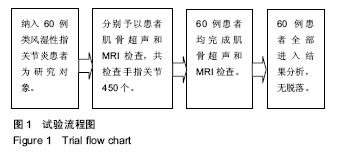
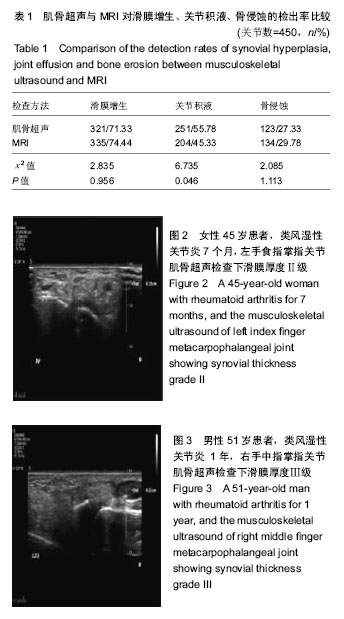
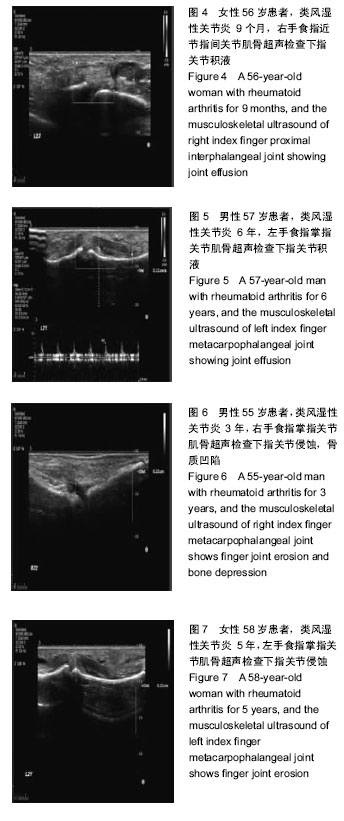
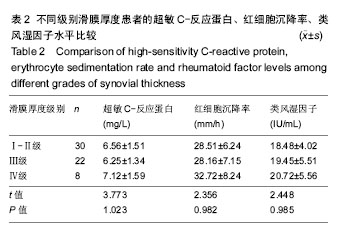
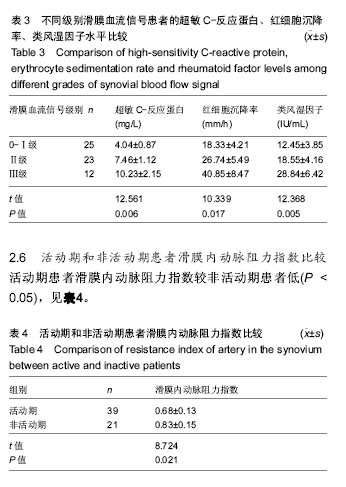
.jpg)